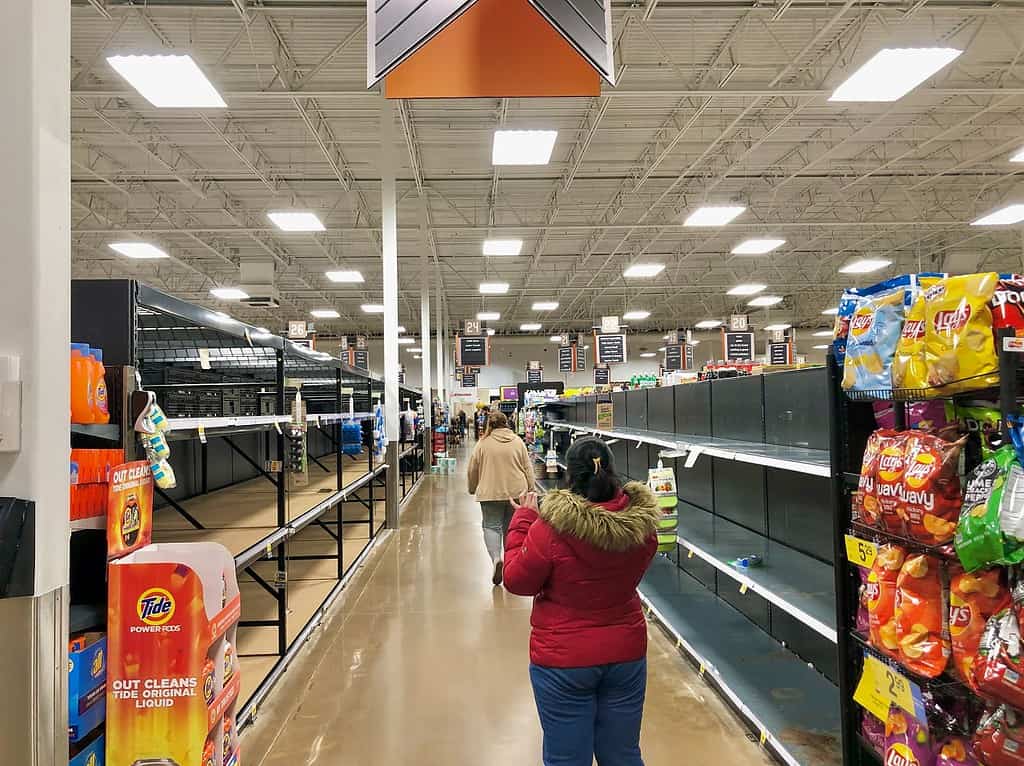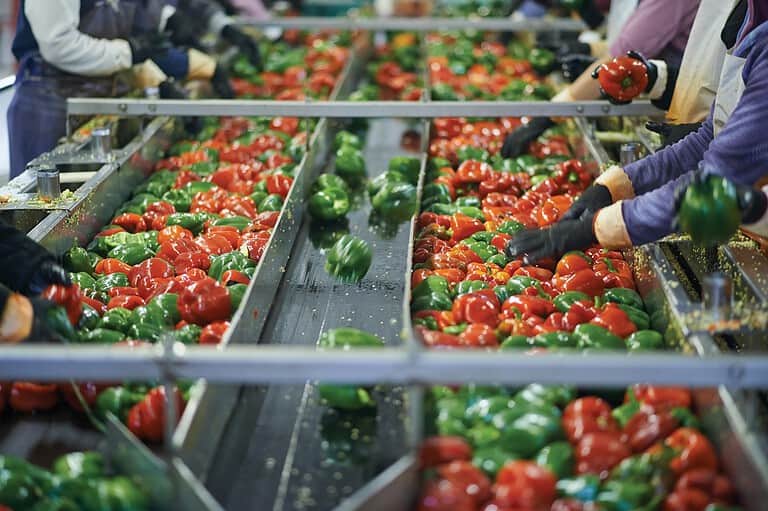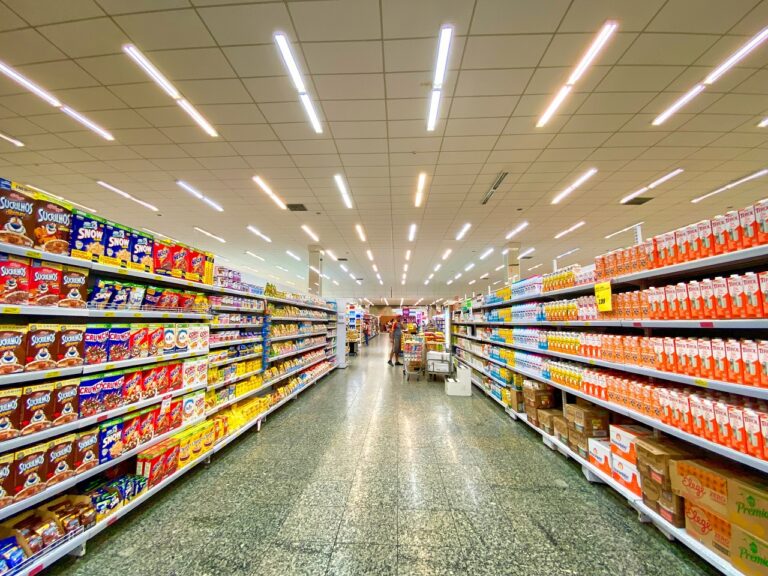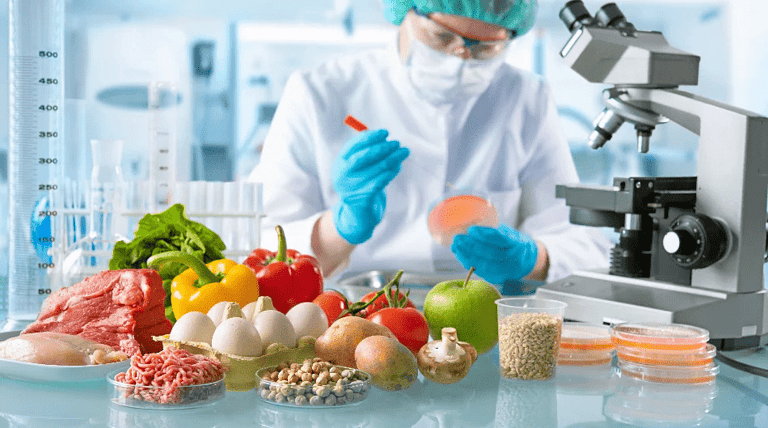The Power of Artificial Intelligence in the Food Industry: Enhancing Efficiency from Farm to Table
Artificial Intelligence (AI) is revolutionizing the food industry from farm to table. AI technology is being applied to improve crop yields, optimize irrigation, monitor soil conditions, and increase efficiency in food processing and distribution. The potential of AI in the food industry is vast, and its impact is already being felt in various areas of the food supply chain.
At the farm level, AI can help farmers make data-driven decisions to optimize crop production, reduce waste, and increase profits. For instance, AI-based surveillance systems can monitor every crop field’s real-time video feeds and alert farmers to potential problems such as pests, disease, or weather changes. AI can also help farmers analyze soil data to determine the optimal planting time, seed variety, and fertilizer application for each field.
AI is also transforming food processing and distribution by improving quality control, reducing waste, and increasing efficiency. AI-based systems can detect defects and contaminants in food products, sort and grade produce, and optimize the packaging and shipping process. AI can also help retailers and restaurants manage inventory, reduce food waste, and improve the customer experience by providing personalized recommendations and faster service.
Benefits of Artificial Intelligence in Farming
At present, farming is facing numerous challenges, including climate change, water scarcity, soil degradation, and pest infestations. To address these challenges, we can leverage the power of Artificial Intelligence (AI) in farming. AI can help farmers increase crop yields, reduce costs, and improve sustainability. Here are some of the benefits of AI in farming:
Precision Agriculture
Precision agriculture is the practice of using data and technology to optimize crop production. AI can help farmers collect, analyze, and act on data in real-time. For instance, AI-powered drones can monitor crop health, soil moisture, and nutrient levels. This information can be used to create precise and targeted treatment plans for each crop. AI can also help farmers optimize planting schedules, irrigation, and fertilization, leading to higher yields and reduced waste.
Crop Management
AI can help farmers manage crops more efficiently and sustainably. For example, AI-powered sensors can monitor soil conditions and alert farmers when crops need watering or nutrients. AI can also help farmers predict weather patterns and adjust farming practices accordingly. Additionally, AI can help farmers identify and respond to pest infestations before they become widespread, reducing the need for pesticides and improving crop quality.
Livestock Monitoring
AI can also be used to monitor and manage livestock. For instance, AI-powered cameras can monitor animal behavior and alert farmers to potential health problems. AI can also help farmers optimize feeding schedules, breeding programs, and animal welfare. By monitoring livestock more closely, farmers can improve productivity, reduce waste, and ensure the humane treatment of animals.
Overall, AI has the potential to revolutionize farming and improve food security. By leveraging the power of data and technology, we can create a more efficient, sustainable, and resilient food system.
Supply Chain Optimization
At the heart of the food industry is the supply chain. From the farm to the table, every step in the process is critical to ensuring that food is safe, fresh, and delivered on time. Artificial intelligence (AI) is transforming the food industry by optimizing the supply chain and improving efficiency. By using AI, we can better manage inventory, streamline logistics, and optimize transportation.

Inventory Management
Inventory management is crucial to the food industry. We need to ensure that we have enough inventory to meet demand without having too much inventory that goes to waste. AI can help us manage inventory by using predictive analytics to forecast demand. By analyzing historical data, AI can predict future demand and adjust inventory levels accordingly. This not only reduces waste but also ensures that we have enough inventory to meet customer demand.
AI can also help us manage inventory by identifying slow-moving products. By analyzing sales data, AI can identify products that are not selling well and recommend promotions or discounts to move the inventory. This helps us reduce waste and optimize inventory levels.
Logistics
Logistics is another critical component of the food industry. We need to ensure that products are delivered on time and in good condition. AI can help us optimize logistics by using real-time data to adjust delivery routes and schedules. By analyzing traffic patterns and weather conditions, AI can recommend the most efficient routes for delivery trucks. This not only reduces delivery times but also ensures that products are delivered in good condition.
AI can also help us optimize logistics by predicting maintenance needs. By analyzing data from sensors on delivery trucks, AI can predict when maintenance is needed and recommend preventative maintenance. This not only reduces downtime but also ensures that delivery trucks are in good condition and products are delivered on time.
Transportation
Transportation is a critical component of the food industry. We need to ensure that products are transported in the most efficient and cost-effective way possible. AI can help us optimize transportation by using real-time data to adjust transportation routes and modes. By analyzing traffic patterns and transportation costs, AI can recommend the most efficient transportation modes for different products. This not only reduces transportation costs but also ensures that products are delivered on time and in good condition.
AI can also help us optimize transportation by identifying opportunities for collaboration. By analyzing transportation data across different companies, AI can identify opportunities for collaboration and recommend partnerships. This not only reduces transportation costs but also improves efficiency and reduces environmental impact.
Food Safety and Quality Control
At every stage of the food production process, from farm to table, ensuring food safety and quality is of utmost importance. Artificial Intelligence (AI) has the potential to revolutionize the way we approach these critical aspects of the food industry.
One way AI can improve food safety is by detecting and identifying potential contaminants in food products. For example, machine learning algorithms can analyze data from sensors and cameras to identify foreign objects or pathogens in food products. This can help prevent foodborne illnesses and reduce the risk of product recalls.
AI can also be used to improve food quality control. By analyzing data from various sources, such as production processes and consumer feedback, AI can help identify areas for improvement and optimize product quality. This can lead to more consistent and higher quality products, which can improve customer satisfaction and brand reputation.
Another way AI can improve food quality control is through predictive maintenance. By analyzing data from sensors and other sources, AI can predict when equipment is likely to fail and schedule maintenance before it becomes a problem. This can help prevent downtime and ensure that production processes run smoothly.
Overall, the use of AI in food safety and quality control has the potential to greatly improve the efficiency and effectiveness of these critical processes. By leveraging the power of AI, we can ensure that the food we produce and consume is safe, high quality, and consistent.
Consumer Trends and Personalization
As we have seen, artificial intelligence is transforming the food industry in many ways. One of the most significant areas of impact is consumer trends and personalization. With the help of AI, food companies are able to analyze vast amounts of data to gain insights into consumer preferences and behaviors. This allows them to create highly personalized products and experiences that cater to individual tastes and needs.
One way that AI is being used to personalize food is through the development of new recipes. By analyzing consumer trends and preferences, food manufacturers can create products that are tailored to specific tastes and dietary requirements. For example, AI can be used to identify ingredients that are popular among consumers and to develop new recipes that incorporate these ingredients.
Another way that AI is being used to personalize food is through the use of smart packaging. Smart packaging is designed to interact with consumers and provide them with personalized information and recommendations. For example, a smart package might be able to tell a consumer how many calories are in a particular product or provide them with recipe suggestions based on their dietary preferences.
AI is also being used to personalize the dining experience itself. For example, restaurants can use AI-powered chatbots to interact with customers and provide them with personalized recommendations based on their preferences. Chatbots can also be used to take orders and make reservations, making the dining experience more convenient and efficient.
In conclusion, AI is transforming the food industry in many ways, including through consumer trends and personalization. By analyzing vast amounts of data, food companies are able to create highly personalized products and experiences that cater to individual tastes and needs. This is just one example of the power of AI in the food industry, and we can expect to see even more innovations in the years to come.
Challenges and Limitations
While the potential benefits of artificial intelligence (AI) in the food industry are vast, there are also several challenges and limitations that must be addressed.
One of the biggest challenges is the lack of data standardization across the industry. Different companies and organizations use different data formats and systems, which can make it difficult to integrate and analyze data from multiple sources. This can limit the effectiveness of AI algorithms and hinder the development of industry-wide solutions.
Another challenge is the need for high-quality data. AI algorithms rely on large amounts of data to learn and make accurate predictions. However, the quality of the data is just as important as the quantity. Inaccurate or incomplete data can lead to flawed predictions and decisions.
There are also limitations to the capabilities of AI. While AI can analyze vast amounts of data and identify patterns that humans may miss, it is not a substitute for human expertise. AI systems can make predictions based on historical data, but they cannot account for unexpected events or changes in the environment.
Furthermore, the implementation of AI systems can be costly and time-consuming. Companies must invest in the necessary hardware, software, and personnel to develop and maintain AI systems. Additionally, there may be resistance from employees who fear that AI will replace their jobs.
Finally, there are ethical considerations to take into account when using AI in the food industry. For example, there may be concerns about privacy and data security, as well as the potential for AI to perpetuate biases and inequalities.
Overall, while AI has the potential to revolutionize the food industry, it is important to recognize and address these challenges and limitations in order to ensure its effective and responsible use.
Conclusion
Artificial intelligence has become an essential tool in the food industry, from farm to table. It has revolutionized the way we produce, process, and distribute food. AI has proven to be effective in various tasks such as food quality determination, control tools, classification of food, and prediction purposes.
Through the use of AI, farmers can monitor and optimize irrigation, detect soil conditions, and identify diseases or pests with 98% accuracy. This has resulted in increased crop yields, reduced costs, and improved efficiency.
AI has also improved food safety by enabling faster and more accurate detection of contaminants and pathogens. This has led to reduced food recalls and improved public health.
Moreover, AI has enabled personalized nutrition and dietary recommendations based on an individual’s genetic makeup, lifestyle, and health status. This has the potential to revolutionize the way we approach nutrition and health.
Overall, the power of AI in the food industry is undeniable. It has improved efficiency, productivity, and safety, while also enabling personalized nutrition and health recommendations. As the world population continues to grow, the demand for food will increase, and AI will play a crucial role in meeting this demand sustainably.






